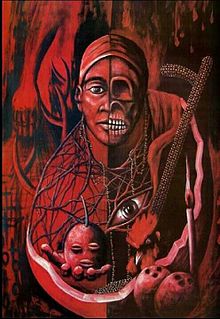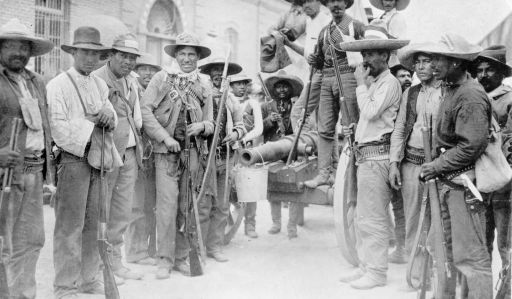Ideas for Historical Games (Part 2 of 3)
#4) Pre-Columbus America (before 1492)
There is Age of Empires 2: The Conquerors, where you could choose to be the Aztecs, Mayans, or Incas, and then lose the game because you are the Aztecs, Mayans, or Incas. The game that should exist is one before the Spanish conquest, and before horses, gunpowder, or the wheel were introduced to the western hemisphere. Since much of what we know about these cultures is from the Spanish conquistadors, this concept will be wildly apocryphal. It would make a great game nonetheless.
While there isn't much written history to go on, there is a plethora of archaeological remnants that could spark a hundred hours of storytelling. Mayan writing is probably the most famous of the indigenous writing systems, but only the priests could read. There could be a puzzle the player must solve as a peasant by actually learning how to translate some ancient Mayan writing.
The religious hierarchy would be a main storytelling mechanism, with the Aztecs sacrificing someone every day, according to Hernando Cortes' journal. The Mayans also practiced human sacrifice, albeit to a much smaller scale. The priests were the ones who could read, the ones who watched the stars, the ones who decided who was to be sacrificed, and the only ones who were allowed to drink chocolate.
Much of what we know about Mesoamerican cultures comes from the journal of Herando Cortes, the head Conquistador. One interesting note in his writing is about a small strange-looking dog that the Aztecs bred for food. He never calls them chihuahuas by name, but he is probably talking about chihuahuas. They weren't bred to be pets.
Then there is the Ball Game, played by Mesoamerican cultures often times to decide conflicts without resorting to warfare. The Ball Game is a bit like soccer, in that you can't use your hands, only your feet, head, elbows, etc. There is a line in the middle of the field that you cannot cross, and the ball is made of heavy rubber. It is said that the losing team was executed, their skulls often covered in rubber to make the heavy ball used in this game.
Finally, the mythology of Mesoamerican cultures is ripe for the picking, much like avocados, the word deriving from the Aztec word for testicle. Besides looking very much like a testicle, it is said that a man once displeased the gods, and his punishment was for his testicles to grow on trees for people to pluck for eternity. And of course the Mayan calendar, which could accurately predict solar eclipses, could add to some kind of ticking clock, perhaps where the player would have to rescue someone from a sacrifice.
Sources:
"The bizarre history behind the word 'avocado.'
https://www.businessinsider.com/avocado-history-word-testicle-2018-6
Age of Empires 2
#5) The Haitian Revolution (1791-1804)
Slavery may be a touchy subject, especially for a game, but the only successful slave uprising in recorded human history deserves more attention. Most likely you wouldn't want to play as the French for both sensitivity reasons, and the fact that you would probably get decapitated in a horrific manner. This revolution should be more widely known also, because after the slaves revolted under the leadership of Toussaint Louverture, Napoleon Bonaparte decided to give up on the Americas and sell the Louisiana Purchase to Thomas Jefferson for $15 million, doubling the size of the United States. Of course Bonaparte's nephew Napoleon III would later try to invade Mexico on Cinco de Mayo, 1862, but his cojones were nowhere near the size of his uncle's.
I'm mostly interested in the Voodoo religion of Haiti (Vodon, Vodoun, Vodou, Vudu, Voudou, what have you), which I researched extensively for my game Brigand (https://store.steampowered.com/app/652410/Brigand_Oaxaca/). Since the real history of this revolution is so bloody, it would probably be better to focus more on supernatural elements. The loa (lwa) are the gods (or spirits) of the Voodoo religion. In 1791, the pact to begin the uprising was made after a feast honoring Ezili Dantor, the Black Madonna, or the loa of vengeance and rage.
The Voodoo religion varies greatly depending on the region, from the Caribbean, to Louisiana, Latin America, and western Africa. Here I'm going to list some of my favorite loa, the names and spelling of which are muddled and varied depending on the region and sect.
Some Voodoo Loa
Eleggua (Papa Legba): Guardian of the Crossroads, the primary deity in the Santeria religion (which originated in Cuba), Eleggua is considered to be the only channel of communication between mankind and the loa. One story depicts him walking through town with red on one side of his hat, black on the other (his two representative colors). This sparked a debate between the people on one side of the street and those on the other, leading to violent conflict. Eleggua has a sense of humor. It is said that he often prods the weaknesses of humans and laughs, ultimately leading to further their development.
Ogun: Ogun is the Loa of iron, metallurgy, war, and politics. He is often believed to reside beneath an active volcano. He is congruent with the Greek blacksmith deity Hephaestus, or the Roman deity Vulcan. Ancient pagan gods often bled into Catholicism through the saints, and then into Afro-Caribbean Voodoo.
Agwe: Agwe presides over the fish and the sea. Before ocean voyages, an offering should be made by sending a mirror out to sea to ensure good weather.
Ayizan: The Loa of the marketplace and commerce, she is the wife of Loko.
Loko: Loko is the Loa of trees, plants, and healing. He is the husband of Ayizan and is worshiped by doctors and healers.
Maman Brigitte: Maman is the Loa of the dead, sometimes depicted as a skeleton. She is wild and many consider her to be an evil spirit. She drinks, holds massive orgies, and uses obscenities on a regular basis. Despite this unpleasantness, it is said that she guards graves from robbers. She is associated with the Celtic goddess Brigid. Since many loa are mixtures of African deities and Catholic saints, this probably means the pagan Irish mixed their old and new religions in similar ways to the Africans.
Sources:
Too many
#6) The Mexican Revolution (1910-1917)
Pancho Villa alone deserves a game. There is a board game if you Google it, but we need a solid action computer game where you play as Pancho Villa raiding towns in New Mexico after the revolution against Porfirio Diaz, the Mexican president who sold out oil to US interests.
Pancho was initially a bandit, but his combat tactics eventually led him to become a general in the revolution against Porfirio Diaz that ended in 1911, and later against Victoriano Huerta in 1913, another right-wing would-be dictator. Pancho Villa became the governor of Chihuahua in 1913, then retired four weeks later, probably out of boredom. At one point, the United States considered him the legitimate authority of Mexico, and in 1914, he played himself in the Hollywood movie The Life of General Villa.
Then, like a complete badass, Villa went and raided Texas and New Mexico in 1916-17, presumably just to gather supplies. This triggered the US to send 5000 soldiers into Mexico on a manhunt for the bandit general, using airplanes for the first time in US military history. They failed. The Germans then tried to contact Villa for support in World War I around the same time as the Zimmerman Telegram, but there is no evidence that Villa ever cooperated with them.
This dichotomy between Villa and Zapata would make for an excellent cooperative multiplayer game. They wrote letters to each other, one suggesting that Zapata should join him in attacking the US, to let them know that Mexico was “The Land of the Free.” Their efforts were largely disconnected, but running two campaigns at the same time would make for some great gameplay mechanics.
Sources:
Too many









Comments
Post a Comment